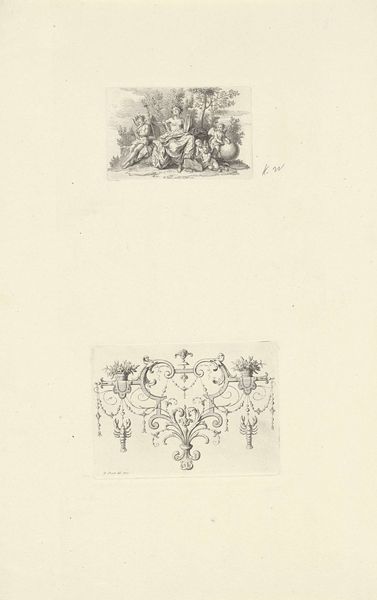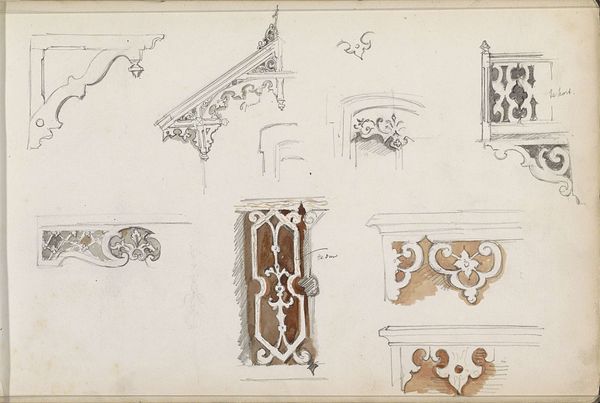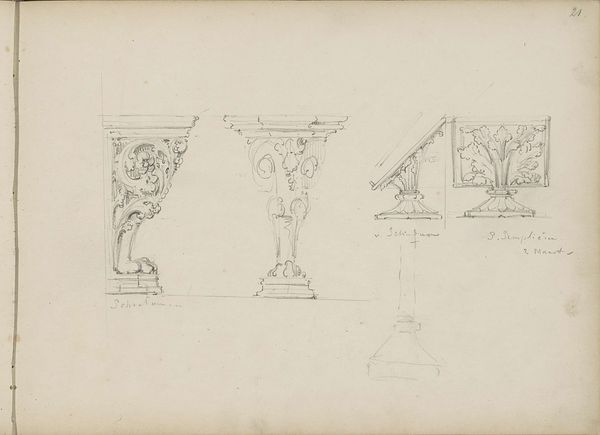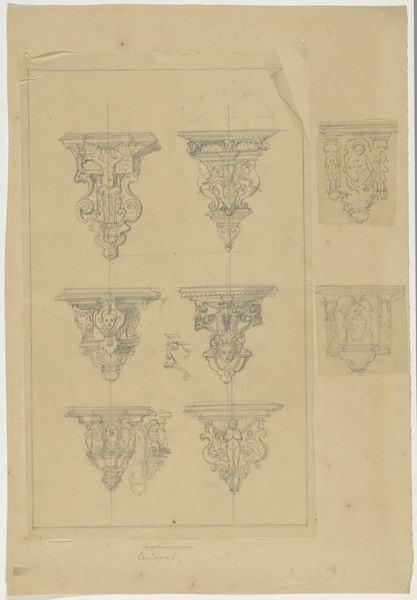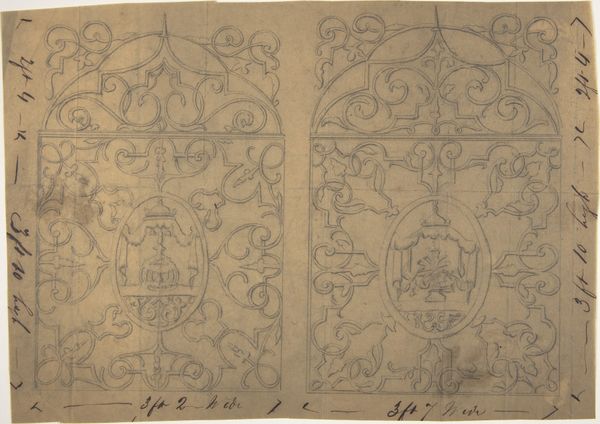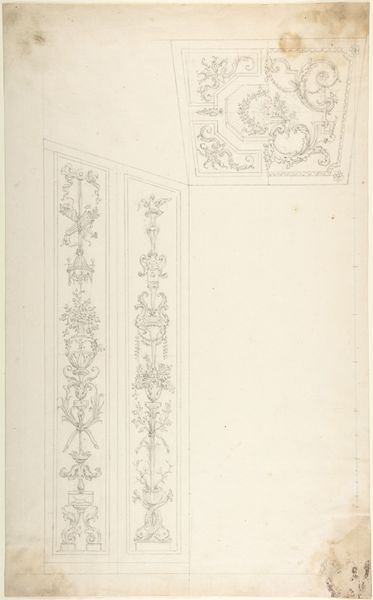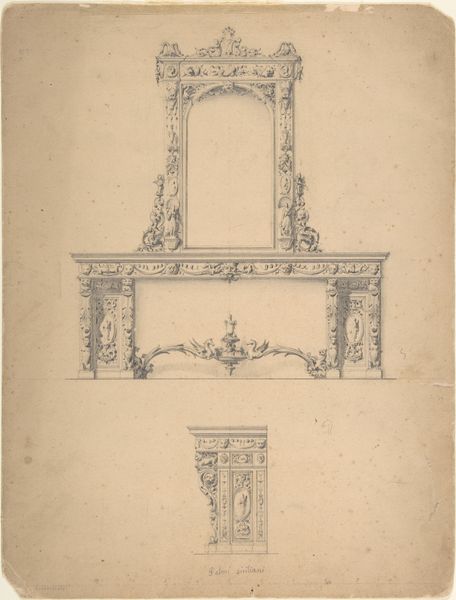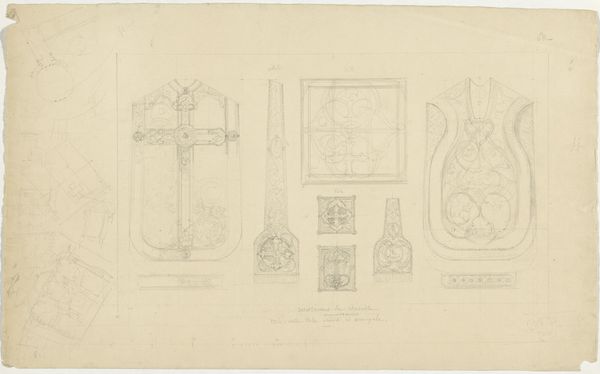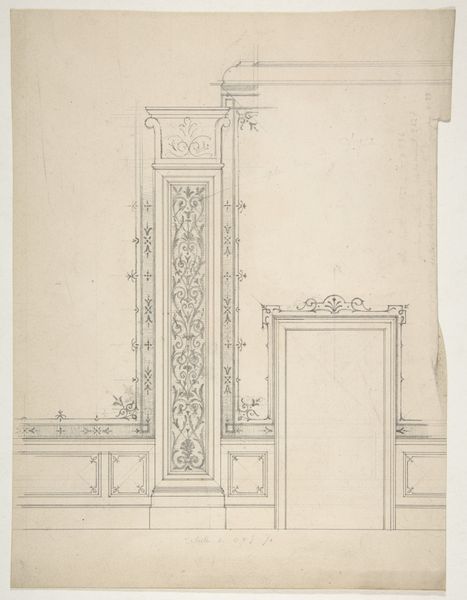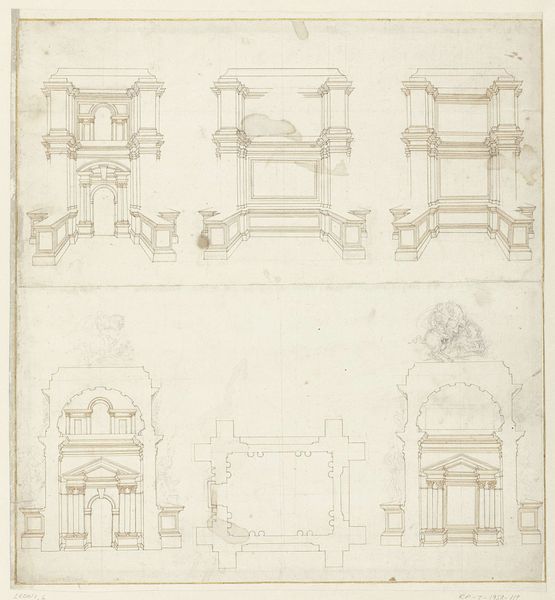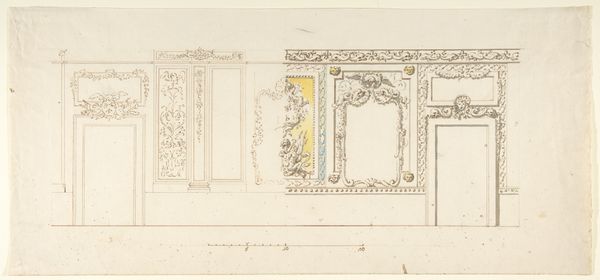
Vijftiende-eeuwse gotische balustrades en gotisch maaswerk c. 1850
0:00
0:00
pierrejosephhubertcuypers
Rijksmuseum
Copyright: Rijks Museum: Open Domain
Curator: Oh, there's a certain quiet to this pencil drawing by Pierre Joseph Hubert Cuypers, dating from around 1850. It’s titled "Fifteenth-Century Gothic Balustrades and Gothic Tracery," and it lives here at the Rijksmuseum. The page is filled with meticulously rendered architectural details. What catches your eye first? Editor: That it’s not really from the fifteenth century, despite the subject. It feels like a historical document, but secondhand, a yearning for a past era filtered through a nineteenth-century lens. Curator: Absolutely! Cuypers was deeply involved in the Gothic Revival, and this drawing seems to be a study, almost a love letter, to the original craftsmanship. Editor: I’m intrigued by the labor it implies. All that detail, carefully reproduced by hand… it speaks to the intense study of medieval craftsmanship during the revival period. What does appropriating a style truly mean, especially when done via such intricate recreation? Were they using locally-sourced pencils? Did this study inform larger constructions, and under what labor conditions? Curator: Well, his understanding of Gothic principles deeply informed his own architectural practice. Cuypers designed and restored countless churches and public buildings throughout the Netherlands, and understanding the means and look of fifteenth-century methods allowed for creative variation on design during building projects. His own labor became a kind of industrialized craft itself. Does that intricate detail resonate emotionally? Editor: In a way, it does. Seeing all that careful labor makes me think about the hands that originally carved those balustrades and tracery, and then the hands that meticulously copied them centuries later. A labor chain, maybe? Curator: A lovely notion. So much more than just pencil on paper. Thanks for unpacking this material complexity of the past. Editor: And thank you for letting me wander through the workshops of history. I think I feel a visit to the carpentry studio coming on.
Comments
No comments
Be the first to comment and join the conversation on the ultimate creative platform.
